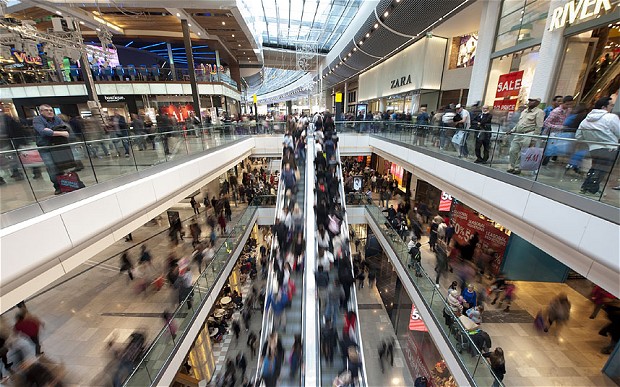Franchising, retail, business

28/04/2015
Amazon will open a retail store, maybe even a chain of gas stations, food and beverage will fuel future shopping centre footfall and malls will evolve into ‘wonder’ emporiums as consumers demand to be entertained: here are four predictions from retail experts at ICSC Europe, which could prove pivotal for anyone involved in the business of buying and selling retail space.
1. Stores are the new black
Five years ago, physical stores were a dubbed a liability and e-commerce was touted as the undeniable future of retail. Yet, today, 90 percent of purchases take place in-store and experts predict that it’s bricks, rather than clicks, that will keep brands relevant in an increasingly digital age.
“Stores will become showcases,” said James Dolphin, Head of EMEA retail agency. “The brands we work with understand their customers and they want to use all channels.”
Case in point: rumours are rife around online giant Amazon’s alleged plans to roll out a chain of physical stores. What shape these will take remains to be seen but Professor Scott Galloway, keynote spe
aker at last week’s ICSC Europe, predicts that Amazon could open a chain of gas stations to capitalise on impulse purchase products such as chocolate, a grocery segment that is increasingly challenging to convert online.
2. Let’s get ‘phygital’
Kevin Mckenzie, Head of Westfield Labs, a 20+ San Francisco based team of retail innovators, argues that no matter what a retailers target audience is or what they sell, both physical and digital must shape every retailer’s growth strategy.
“Retail is no longer purely brick-and-mortar or strictly online, over the last few years, physical and digital worlds have blended to create a fully immersive shopping experience. As an industry, we need to think differently and embrace the new shopper journey.”
Some examples of Westfield Lab’s digital innovations include, Express Parking whereby customers can check available spaces on their phone, then their registration plate is detected by a system that direc
ts them to free spaces and payment is taken automatically by card when they leave the centre. And Optimising Way Finding is Westfield Labs’ mobile navigation application that directs shoppers around their centres.
3. Experiences, not ‘stuff’
Chris Sanderson, co-founder of the Future Laboratory, said mall owners and landlords are no longer in the business of selling retail based on a price per square metre, but ‘wonder’ per square metre. “How do you profit from ‘wonder’?’ he asked. “Look at Apple; It’s no longer enough to put up a mall, turn on the lights, add some air conditioning and leave the sales guys to it,” he said. “We need a new model of leasing, to move beyond this method of charging for space.”
From trampolines to theme parks, leisure and entertainment will emerge as the ‘anchor’ tenants in malls with savvy landlords who recognise that retail alone won’t generate the required footfall. “Leisure and entertainment is a ‘differentiator’, if you can bring people to you by offering a superior all round property then you have a competitive advantage,” said Nick Varney CEO of Merlin Entertainment.
4. Feed your shopping habit
A shopper who eats will spend 20 per cent more on retail. It’s a staggering statistic given that many malls fail to recognise the importance of F&B, that was the message from the ICSC delegates during the food is the way to the shoppers’ heart session. “Owners and operators must spend more time on the planning of F&B to avoid ending up with the usual suspects, “said Brian Johnston, Managing Director, International, Wagamama.
Fonte:http://www.joneslanglasalleblog.com/investor/the-business-of-buying-and-selling-retail-space/